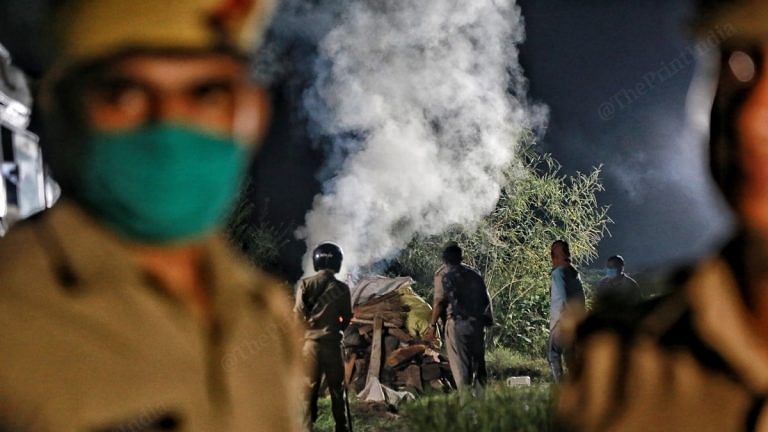Dalits in India live like Jews in Holocaust Germany and Black slaves in pre-capitalist America. Yet, the world knows nothing about their pain. Dalits live in this country without any respect and recognition for their right to life and human dignity, which are the fundamental aspects of human rights. Dalits haven’t had access to legal justice in the “world’s largest democracy” from its inception.
From the first reported incident of caste violence in Independent India — known as Kilvenmani massacre (Tamil Nadu) where 44 Dalits were burnt alive by the dominant caste landlords in 1968 for demanding hike in wages — to Chunduru (Andhra Pradesh) massacre of 13 Dalits in 1991 and Khairlanji atrocity in 2006, Dalits have been vainly hoping to access legal justice.
Rape and murder of a Dalit woman in Hathras, Uttar Pradesh, is only the tip of the iceberg of endemic caste violence against Dalit women in India. From Khairlanji to Hathras, what Dalits have witnessed is the manipulation of witnesses, faulty judiciary process to cover up the crimes, and distorted reportage by the Brahminical media.
Caste is the most pertinent and compelling factor in understanding sexual violence in India. In December 2012, a young middle class educated woman Nirbhaya was gang-raped, tortured and murdered in the capital city of Delhi. The gruesome incident shocked the nation. Nationwide protests erupted against the State’s failure to protect women’s honour and bodily integrity. Media coverage highlighted the candlelight marches and protests of middle classes across the country.
Was the rape of Nirbhaya the first of its kind that took place in India? Why was the response of the middle class/upper castes so intense in Nirbhaya case? During the Nirbhaya protests, Dalits scholars have repeatedly questioned and lamented the lack of similar response from the general public against Khairlanji atrocity.
Also read: Can we get swift justice too, Dalits ask after Kopardi rape death sentence
A few years before Nirbhaya, on 29 September 2006, a mob of dominant-caste men and women attacked a Dalit woman, Surekha Bhotmange, and her three children in Maharashtra’s Khairlanji village. Surekha Bhotmange had been fighting for her land rights against the dominant castes who had encroached on her small piece of agricultural land. Enraged by a Dalit woman’s assertiveness, dominant castes dragged Surekha Bhotmange, her daughter and two sons out of their home, paraded them naked, raped and lynched them. Burnt charcoals were inserted into the private parts of Surekha Bhotmange and her daughter Priyanka. Their dead bodies were dumped at the outskirts of the village. The participation of caste-Hindu women in the rape and lynching of a Dalit woman and her children shocks the very human conscience. However, such a gruesome incident did not shock the nation.
It took more than a week for the news of Khairlanji massacre to appear in the print media. There was candlelight march nor did the media change the victims’ names to protect their identity. In fact, the Brahminical media distorted the case by reporting that Surekha Bhotmange had an extramarital affair with her cousin and thence justified the atrocity. The police and the politicians operated according to the interest of the dominant castes. While Nirbhaya was constructed as an “innocent” and “pure victim”, Surekha, a Dalit woman, was constructed as sexually impure by the same Indian media.
Sexual purity/caste purity determines the value of a woman in Brahminical society. Brahminical society constructs Brahmin and caste-Hindu women as sexually pure as well as aims to protect/control their sexual purity. Dalit women are constructed outside the normative framework of caste purity and sexual purity as the caste system sanctions the upper-caste man’s access to Dalit woman’s sexuality, body and labour. Endemic caste-based sexual violence against Dalit women is condoned and considered normal. Dalit women are sexually exploited (casual sexual access) in the agriculture fields or construction sites where they toil for livelihoods. They are also raped, paraded naked and/or lynched by dominant castes when they want to teach a lesson to Dalit caste groups for transgressing the caste order. Any act of transgression ranging from Dalits inadvertently entering the sacred spaces such as temples to fighting for a hike in wages leads to violence against Dalits.
Also read: Abuses Ambedkar Caravan founder faces every day: Clean my toilet, you belong to gutter
Police, politicians, judiciary and the media protected the interests of the dominant caste perpetrators in every case of caste atrocity so far. Hathras is not another Nirbhaya but another Surekha. The government’s inclination to protect the interest of the dominant castes is evident in Hathras’s case since the police seem to have already tampered with evidence.
While the significant positions in judiciary, politics, media and bureaucracy are occupied largely by Brahmins and dominant castes, Dalits are living in poverty and inhuman conditions in Indian society. Dr B.R. Ambedkar had said, “Rights are protected not by law but by the social and moral conscience of society.” Such rise of the moral conscience of the middle class/upper castes was evident in the nationwide protests in case of Nirbhaya.
Caste hierarchies have proved that women are not a monolithic category. These hierarchies determine the value of a woman, her dignity and even her right to life. There is still a question over whether the middle class/upper castes can rise up to such a moral state to fight for all women’s security irrespective of caste location of the victim. As long as the responsibility of fighting against caste-based atrocities lies solely on Dalits in India, and the judiciary, politics, media and the general public (middle class/upper castes) do not shed their casteism to stand up for Dalit human rights, Dalits’ access to legal justice is not possible.
Sowjanya Tamalapakula teaches at Tata Institute of Social Sciences (TISS), Hyderabad. Views are personal.
This article was first published by Velivada, an anti-caste platform.
